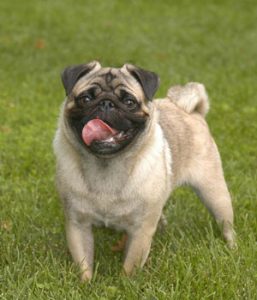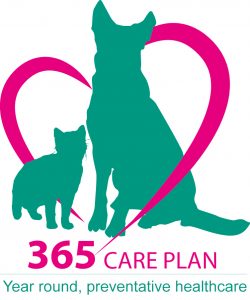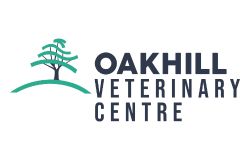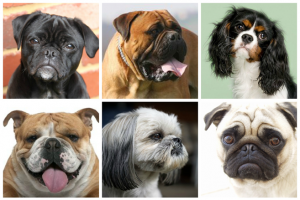
Author: Julie Nuttall
Cat Poisoning
Permethrin toxicity remains one of the most common causes of poisoning in cats, and yet many owners don’t know what it is.
Permethrin is an insecticide commonly found in over the counter ‘spot-on’ flea treatments for dogs as well as some shampoos and household flea products.
In most mammals, permethrin has a good level of safety, but for some unknown reason when it comes to cats it’s highly toxic, which means it’s important that pet owners who own both cats and dogs understand the dangers of permethrin to a cat.
Cats are most commonly poisoned after their owners mistakenly use a dog product on the cat, but they can also show mild signs after close contact with a recently treated dog.
Signs of poisoning
Signs usually develop within a few hours, although they can sometimes be delayed by up to 72 hours. It can often take 2-3 days for the signs to improve.
The effects of insecticide poisoning in mild intoxications include; paraesthesia (pins and needles) caused by direct contact with permethrin, which may result in paw flicking, ear twitching and uncontrollable contractions of the cutaneous trunk muscles.
If your cat begins grooming the contaminated area, you may notice hypersalivation and vomiting. In cases of severe intoxications severe muscle tremors, seizures and / or depression may be present.
Treatment
If you think your cat has come into contact with the substance, it’s important you that any remaining product should be washed from your cat’s hair coat (or clipped in long haired cats) using cool water, NOT warm water as this will increase absorption of the product.
Controlling the convulsions is often difficult, and your cat may need to be hospitalised for several days.
The Veterinary Poisons Information Service reports that 15% of cases of insecticide poisoning result in death or euthanasia. However, cats that receive immediate treatment typically survive and usually suffer no long-term effects.
Prevention
If you do own both cats and dogs, the easiest way to prevent any kind of permethrin dangers is to only use licensed flea treatments on your cat, but also check your dog’s flea treatments to make sure it doesn’t contain the substance.
Household treatments such as flea sprays may also contain permethrin, therefore check the label before spraying around your home, if you’re still unsure- talk to your vet about which products can be safely used.
If you do need to use a flea treatment on your dog that contains permethrin, the safest option is to keep yours pets apart until the dog’s treatment has dried. This is to prevent mutual grooming, which could result in poisoning if your cat became exposed to sufficient product. There may be advice on this situation on the packaging of the dog product.
If you suspect your cat has been poisoned, please get in touch.
Do you have a brachycephalic dog?
Brachycephalic dog breeds are increasing in popularity, but one thing most new owners don’t realise is that they can be quite a challenge to care for.
What is brachycephalia?
Brachycephalia means ‘shortened head’ and refers to the dogs flat and wide skull shape. The appearance of the head appears as though the skull has been severely compressed from front to back, they will also appear flat faced with short noses.
Ownership of brachycephalic dog breeds have increased by 3104% since 2007 according to Kennel Club Figures, the rise could be a result of more celebrities being pictured with these dog breeds, resulting in a dog ‘trend’.
Popular breeds that are classed as brachycephalic include:
- Boxers
- Bulldogs
- Boston Terriers

- Pugs
- Shih Tzus
- Chihuahuas
- Chow Chows
- Pekingese
- Lhasa Apso
- Bull Mastiffs
- English Toy Spaniels
(Please note, not all breeds affected are listed above)
The reason that these breeds may be more challenging to care for is due to the number of health conditions they can possess.
Although these flat-faced dogs are cute, their short noses can also cause breathing problems. These dogs often suffer from snoring and snorting, and although these may seem harmless, it could be an indicator that their airway is becoming partially obstructed, and this can become worse over time.
These dogs have been bred mainly for their looks, but the flat-face look is a result of a smaller upper jaw, in which the tissues inside are bigger than the jaw can allow. The airway problems that result from this overcrowding are collectively known as ‘brachycephalic airway syndrome’.
Brachycephalic airway syndrome
This syndrome refers to a particular set of upper airway abnormalities that affects these particular dog breeds. This syndrome is also called brachycephalic respiratory syndrome, brachycephalic syndrome or congenital obstructive upper airway disease.
The upper airway abnormalities that occur in this syndrome include:
- Stenotic nares
- Elongated soft palate
- Hypoplastic trachea
- Everted laryngeal saccules
A dog with brachycephalic syndrome may be affected with a combination of one or more of these abnormalities.
Signs & symptoms
Not all brachycephalic dogs will have all these symptoms, but if your dog is presenting more than one symptom, it’s important to get them seen by the vet as soon as possible. The following signs and symptoms you should keep an eye out for are:
- Dyspnea (breathing difficulty)
- Noisy/labored breathing
- Stridor (high pitched wheezing)
- Continued open-mouth breathing
- Extending of head and neck to keep airway open,
- Sitting up or keeping chin in an elevated position when sleeping
- Sleeping with toy between teeth to keep mouth open to compensate for nasal obstruction
- Cyanosis (blue/purple discoloration of the skin or gums)
- Sleep apnea
- Stress and heat intolerance.
- Snoring/gagging/choking/regurgitation/vomiting
- Collapse
If your dog does any of the above, and you’ve come to think of it as ‘normal’, it’s still worth visiting your vet to check their health. Symptoms generally progress with age and typically become more severe as they age.
What other problems do brachycephalic dogs have?
Eyes and Eyelids: Brachycephalic dogs’ eyes tend to protrude out of their skull a bit more than other dogs. Sometimes it’s difficult for eyelids to close over their eyes (even while sleeping), this can lead to a lack of lubrication over the cornea and can also cause corneal ulceration.
Teeth: Brachycephalic dogs have the same number of teeth as other dogs, but less space to fit them all, which can lead to periodontal disease.
Treatment
Usually your dog will not require active treatment unless it shows signs of clinical problems. 
Treatment will vary depending on the type, cause and severity of the problem(s). Surgery, such as shortening an elongated palate or widening the nostrils, can prevent some breathing problems. Your vet will monitor the dog’s breathing, pulse, heart rate, temperature and other factors when surgery is performed.
How can I help my dog?
You can help your brachycephalic dog by protecting it from warm, humid weather and keeping its weight in check as obesity can worsen respiratory problem.
It’s important you schedule check-ups for your pet, this will not only monitor their overall health, but also offer you advice on diet and exercise, to give you peace of mind and to also keep your canine happy.
The importance of Vaccinations: when should my kitten have its first vaccination?
Bringing a new kitten into your home can be a big step, but also very rewarding. Now you’ve decided you want to share your home with a new kitten, you have on average the next 14 to 15 years with your new feline friend.
Over this time frame a lot can happen that can affect your cats health, but there’s serious and common diseases that can be avoided.
Vaccinations
Having your kitten vaccinated is very important as it prevents against some serious and common diseases that can prove costly. It also prevents them from passing on diseases to other animals.
When it comes to getting your kitten vaccinated, in general, an initial vaccination course is made up of two separate injections three to four weeks apart. In the UK, most kittens have their first vaccination at nine weeks and the second vaccination at 12 weeks. After this, kittens and cats usually need ‘booster’ vaccinations every twelve months.
What do vaccinations protect against?
The vaccinations your cat receives will vary, but in the most part they cover a combination of serious and common diseases, which include:
-Feline Infectious Enteritis (FIE, feline panleukopenia, feline parvovirus)
-Feline herpesvirus (FHV-1) and feline calicivirus (FCV)- Cat flu
-Feline chlamydophilosis (Chlamydophila felis, feline chlamydophila infection)
-Feline leukaemia virus (FeLV)
These diseases are thankfully fairly uncommon amongst vaccinated animals these days, but this is mainly due to the widespread vaccination regime in operation. In areas where animals aren’t vaccinated, these diseases are very common and often fatal to the animals affected.
“I’ve read that annual vaccinations are a way for my vets to make money and are not needed”
Ultimately it’s up to you to decide if you want your cat to have annual vaccinations. Annual vaccinations are important as viruses change over time (think flu), by vaccinating your kitten/cat annually, this will provide them the best cover.
If you live in an area with low vaccination rates, many of the diseases listed above are still common. It’s heart breaking to see an animal die of a readily preventable disease and while they may have had their two vaccinations early on in life, they could still come into contact with new diseases that weren’t around then, this is why it’s important for your cat to keep up to date with annual vaccinations.
Are annual vaccinations expensive?
Annual vaccinations aren’t going to leave a hole in your purse; in fact they can prevent against any costly treatments.
Our 365 Care Plan which includes annual vaccinations* can be paid in easy and affordable monthly direct debits. (Click here to view the full 365 Plan).
Are kittens vaccinated when adopted?
This would depend entirely on where the kitten was adopted. Cat centres such as Cat Protection and the RSPCA will vaccinate a kitten or cat before they move to their new home.
If your kitten has come from a private breeder or anywhere else, it’s important to ask the person who has been looking after the kitten/ cat if they’ve had them vaccinated, if they say yes- make sure they provide you with a vaccination record.
FREE CUSHING’S LAB TEST FEE
TALK ABOUT LAMINITIS – FREE CUSHING’S LAB TEST FEE* FOR HORSES
Past ‘Talk about Laminitis’ test results show that you should look out for any of these clinical signs in your horse:
- Laminitis
- Abnormal or delayed moulting
- Muscle wastage
- Periorbital fat (fat round the eyes)
- Increased drinking and urinating
To claim your free Cushing’s lab test fee, generate your voucher code at www.talkaboutlaminitis.co.uk, then call us to make your appointment.
Oakhill blood sampling fee, visit fee and postage still apply. Offer available from 1st June 2017 – 31st October 2017.
Each voucher is only redeemable against an ACTH blood test where the patient has not previously diagnosed and being treated for PPID and is not valid for repeat testing /case monitoring.
Calf Plans


Cattle Lungworm Warning
Lungworm can appear from early June and is commonly seen in unvaccinated calves and naïve adult cattle.

Infection with lungworm (Dictyocaulus viviparus) results in an immune-mediated pneumonia, of which the earliest sign is a cough after exercise. Later signs include a persistent cough, milk drop and death in severe cases.
Once infective larvae are ingested from pasture they migrate to and mature in the lungs. Adult worms begin producing eggs between 3-4 weeks later and can shed millions of larvae onto pasture, to continue the lifecycle. Climatic conditions play an important role in the development of the infective larvae on pasture. Warm, wet weather favours larvae development.
Detection is currently based on clinical signs, detection of larvae in faeces and antibodies in either blood or milk. Lungworm should be considered in grazed animals with a persistent cough or signs of pneumonia.
Please contact the practice if you suspect lungworm may be a problem in your herd.
BUY 3 get 1 FREE on pet parasite products
During July we are offering BUY 3 get 1 FREE on selected small animal parasite products.
We currently have selected pet parasite products on a BUY 3 GET 1 FREE OFFER and for July we’ll be adding even more popular products to this great offer.
Please contact your Oakhill Veterinary Centre for further details.
Oakhill Nurses WIN BVNA competition
Our team of Registered Veterinary Nurses have been celebrating winning first place in the BVNA ‘Best Display Showing the role of the Veterinary Nurse’ competition.
May is BVNA Veterinary Nursing Awareness Month in which Veterinary Nurses and their practices across the country celebrate their role by taking part in a number of activities and competitions run by the BVNA, which demonstrate their important qualifications.
During the month, our nurses took part in World Horse Welfare Penny Farm Dog show, by offering free weight checks on their Oakhill stand and discussing the importance of preventative healthcare with dog owners.
Each client who attended a nurse clinic throughout May was entered into a free prize draw to win some great prizes.
Every year, the nurses create decorative displays for each branch, highlighting the role of the veterinary nurse. The year’s displays consisted of a colourful A-Z of veterinary nursing theme, explaining the vet nurse qualification and the services they are qualified to offer in branch.
It was recently announced that our Conway Drive branch had won first prize in the BVNA Best Display ‘Showing the role of the Veterinary Nurse’
Well done to our fantastic team of veterinary nurses!
FARM VET SAM DELIVERS CALF TRIPLETS
Calf Triplets: What are the odds of that!
Oakhill Farm Vet Sam Millward had a bit of a surprise in his first month at Oakhill when he went to what he thought would be a ‘text book’ calving at a farm in Chipping.
Sam delivered twin calves at Coltercoates Farm in Chipping but on examination of the mother, felt another calf, which he subsequently safely delivered.
The chance of triplet calves is said to be around 700,000-1 – not something that Sam is likely to see again in his veterinary career.
All 3 calves and mother are doing well.

